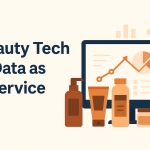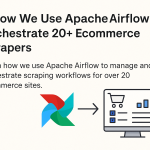E-commerce isn’t failing. But how we measure it often is.
If you’re running a beauty tech startup or leading growth at a DTC brand, you’ve likely seen your ROAS shrink, customer acquisition costs rise, and attribution dashboards leave more questions than answers. Blame it on platform changes, ad fatigue, or inflation—but there’s a deeper, quieter culprit: your attribution model.
What if your e-commerce performance isn’t broken, but the way you track and interpret customer behavior is?
Let’s unpack how outdated attribution thinking is costing beauty brands real money—and how smarter data and tools like Beauty Feeds can fix it.
The Attribution Gap That’s Bleeding Your Budget
Attribution is simply the process of assigning credit to the marketing touchpoints that drive conversions. Seems simple enough.
But here’s the problem: most e-commerce teams still rely on outdated models, like last-click attribution, to decide which channels to scale or cut. These models credit the final action before purchase, ignoring the entire customer journey—research, reviews, TikTok tutorials, influencers, and email reminders.
That’s like handing an Oscar to the last actor on stage, ignoring the entire cast that carried the story.
In 2025’s omnichannel, multi-device, content-rich e-commerce world—this approach no longer holds.
Real-World Scenario: A Broken Model in Action
Let’s say a customer sees a trending lipstick on TikTok, Google reviews, visits your site, signs up for a discount, clicks a retargeted Instagram ad a week later, and finally buys after receiving an email offer.
Under a last-click model? All the credit goes to the email.
That email did its job—but it didn’t build the desire, trust, or initial discovery. If you double down on email and slash your influencer budget, you risk killing the very engine that drove awareness in the first place.
That’s misattribution—and it leads to misinformed strategy.
Attribution Needs to Match the Complexity of Beauty E-commerce
Beauty shoppers are especially nonlinear. They:
- Follow trends on Instagram and TikTok
- Rely heavily on peer reviews
- Compare price points across multiple marketplaces
- Expect personalized experiences based on skin tone, needs, and past behaviors
That makes proper attribution not just nice-to-have—it’s mission critical.
And it can’t be solved with just another dashboard. You need the right data.
Why Beauty and Cosmetic Datasets Matter
Traditional analytics platforms give you data about your users. But what about the industry-wide context?
That’s where structured beauty datasets and cosmetic datasets come into play.
These datasets include:
- Product pricing and promotions across e-commerce sites
- Customer reviews and sentiment
- SKU-level product performance
- Ingredient trends and formulation tags
- Competitor launches and packaging analysis
With this kind of insight, your attribution model doesn’t just see what you did—it understands what the market was doing at the same time.
Example: If a spike in sales coincides with your competitor’s price hike or a TikTok trend mentioning a shared ingredient, you’re looking at a cohort or contextual lift—not just a lucky campaign.
The Role of E-Commerce Scraper APIs in Modern Attribution
To access this level of intelligence, you need real-time data—not quarterly reports or static dashboards.
An E-Commerce Scraper API lets you:
- Monitor competitor pricing and inventory shifts
- Analyze product descriptions, ingredients, and reviews at scale
- Track consumer behavior patterns across platforms
With this data plugged into your attribution framework, you start seeing why a user converted—not just where.
You’ll know:
- If users preferred your product because it had better reviews
- If price drops drove a lift in conversions
- If shipping times or bundles made the difference
And that’s how you go from guessing… to growing.
Moving from Gut Feeling to Grounded Strategy
If you’re scaling a beauty brand in 2025, your biggest risk isn’t bad creative or weak product—it’s flying blind with the wrong data model.
Ask yourself:
- Do you trust the attribution model behind your ad spend?
- Are you capturing the full customer journey across platforms?
- Can you benchmark against competitors and market trends in real-time?
If not, it’s time to rethink your e-commerce analytics stack.
How Beauty Feeds Helps You Fix the Signal
Beauty Feeds is built specifically for beauty e-commerce. It offers:
- Access to high-quality beauty and cosmetic datasets
- Real-time scraping tools for product listings, reviews, and pricing
- APIs designed for performance marketers, data scientists, and growth teams
Whether you’re building a custom attribution engine, enhancing media mix modeling, or just trying to stretch your ad budget further—Beauty Feeds gives you the data advantage.
Final Thoughts
The beauty e-commerce space isn’t broken—it’s evolving. What’s broken is how many brands measure success.
With granular, real-time data and modern attribution thinking, you can spot trends earlier, optimize spend smarter, and grow with clarity—not guesswork.
Stop blaming the market. Start upgrading your model.
Learn more about Beauty Feeds and how our tools can power smarter, faster e-commerce decisions.








Leave a Reply